Address
304 North Cardinal
St. Dorchester Center, MA 02124
Work Hours
Monday to Friday: 7AM - 7PM
Weekend: 10AM - 5PM
Address
304 North Cardinal
St. Dorchester Center, MA 02124
Work Hours
Monday to Friday: 7AM - 7PM
Weekend: 10AM - 5PM
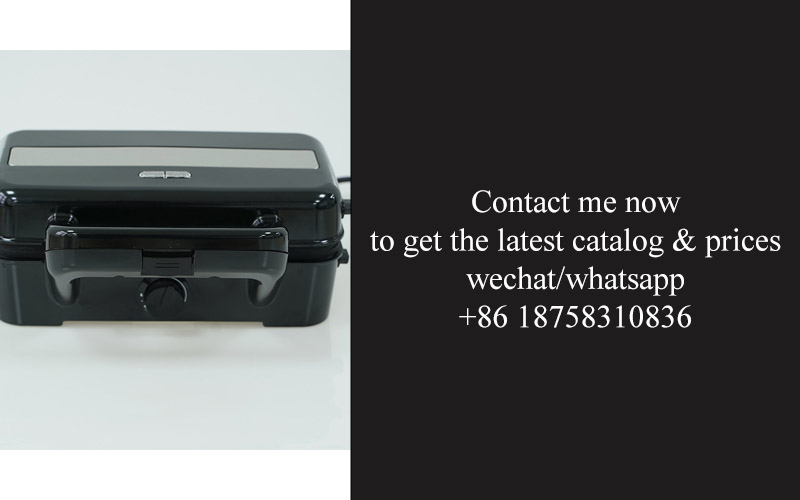
In a world where convenience and speed are king, the commercial toastie maker has emerged as a staple in cafes, delis, and fast-food establishments. This compact, efficient appliance has not only transformed the way we enjoy toasted sandwiches but has also sparked a wave of innovation within the culinary industry. Let’s delve into the evolution of this nifty gadget and what it means for both suppliers and consumers.
Commercial Toastie Makers have quietly risen in popularity, transforming the way we savor the iconic snack known as the toastie. Once a staple in local cafes and cozy diners, these compact and versatile appliances are now finding their way into a variety of commercial settings. The surge in demand can be attributed to several factors, each contributing to the toasterie trend.
One key factor is the rise of grab-and-go culture. As people’s lives get busier, there’s a growing preference for quick and convenient food options. Toastie makers offer the perfect solution for fast-service restaurants, coffee shops, and food courts, where they can churn out warm, satisfying sandwiches in minutes.
Another reason for the rise is the versatility of these machines. Unlike traditional toasters that only crisp the edges, a commercial toastie maker allows for the perfect balance of toasted bread and melting cheese. This feature has made them a favorite for creating a wide array of sandwiches, from classic cheese and ham to gourmet options like avocado and smoked salmon.
Moreover, the innovation in design and technology has significantly contributed to the popularity of commercial toastie makers. Modern units come equipped with features like variable heat settings, defrost options, and non-stick surfaces, ensuring that operators can achieve the perfect toast every time. These advancements have also made maintenance easier, which is crucial in high-volume settings.
The convenience of using a toastie maker extends beyond just speed and efficiency. They are also incredibly user-friendly, often requiring minimal training for staff. This ease of use has made them an attractive addition to the kitchen for businesses looking to streamline their operations without compromising on quality.
Additionally, the marketing potential of a toastie maker cannot be overlooked. These machines often come with built-in advertising options, such as sandwich display cases that showcase various combinations and recipes. This feature allows operators to engage with customers visually and encourages them to try new flavors, ultimately boosting sales.
As the health and wellness trend continues to gain traction, the commercial toastie maker market is responding by offering healthier alternatives. We’ve seen a surge in the popularity of whole-grain breads and reduced-fat cheeses, aligning with consumers’ increasing health consciousness. This shift towards healthier options is further propelling the demand for these versatile machines.
Moreover, the convenience of a toastie maker isn’t just for sandwiches. They are also excellent for creating warm and toasty open-faced dishes, making them a versatile addition to breakfast and lunch menus. This dual-purpose capability ensures that these appliances can cater to a diverse range of customers, from those looking for a quick breakfast option to those seeking a satisfying lunchtime treat.
Another important aspect is the cost-effectiveness of commercial toastie makers. While they may require an initial investment, the long-term savings from reduced labor costs and the ability to create high-margin products quickly more than offsets the purchase price. For operators looking to maximize profits, this factor cannot be overlooked.
In recent years, we’ve also seen an increase in customization and personalization. Toastie makers now come with various sandwich sizes and shapes, allowing businesses to cater to different preferences. Whether it’s a tiny slider for a mini feast or a large, hearty sandwich for a hearty meal, these machines can accommodate a variety of requests.
The environmental considerations are also shaping the market for commercial toastie makers. As more businesses focus on sustainability, they’re looking for appliances that align with their green initiatives. Modern toastie makers are designed with energy-efficient components and are often made from recyclable materials, making them an eco-friendly choice for any commercial kitchen.
The global market for commercial toastie makers is also benefiting from the export boom. As more and more businesses discover the value of these appliances, they’re exporting them to various regions worldwide. This has not only expanded the customer base but has also fueled the innovation cycle, with manufacturers continuously striving to offer the latest and greatest features.
Lastly, the integration of toastie makers into social media has had a significant impact. The ability to post stunning, mouth-watering photos of freshly made toasties on platforms like Instagram has sparked a sense of FOMO (fear of missing out) among foodies, leading to more requests for this type of snack in various commercial establishments.
In summary, the rise of commercial toastie makers is a testament to the evolving food industry, where convenience, health, and innovation are at the forefront. These machines are not just a passing trend but a vital tool for any business looking to offer a quick, satisfying, and customizable meal option.

In the bustling landscape of the commercial kitchen equipment market, the rise of commercial toastie makers has been nothing short of a game-changer. These compact, versatile appliances have quickly become a staple in cafes, delis, and even hotels, where the demand for quick and delicious toasted sandwiches has surged. Understanding the market dynamics behind this trend is crucial for suppliers and industry stakeholders alike.
The demand for convenience and speed in the foodservice industry has grown exponentially. Customers are increasingly looking for quick-service options that don’t compromise on quality. Commercial toastie makers fit perfectly into this niche, offering a simple yet effective solution for creating warm, toasted sandwiches in minutes. This convenience has made them a must-have for establishments aiming to cater to the on-the-go consumer.
Evolving consumer preferences have also played a significant role in the market dynamics. There’s a growing trend towards healthier eating habits, and toasties have evolved to include a variety of healthier options, such as whole-grain breads, lean proteins, and fresh vegetables. This shift has expanded the market for commercial toastie makers, as they can accommodate these healthier choices while still delivering the same quick-to-prepare advantage.
The competition within the commercial kitchen equipment sector is fierce. Suppliers must differentiate their products to stand out. For commercial toastie makers, this means focusing on features that enhance ease of use, durability, and customization. The ability to toast different types of bread and accommodate various fillings has become a key selling point, as it caters to the diverse needs of operators and their customers.
Moreover, the rise of commercial toastie makers is closely tied to the popularity of gourmet and artisanal food. As consumers seek unique and high-quality food experiences, operators are looking for specialized equipment that can help them create these offerings. This has led to a market segment that is more discerning, demanding toastie makers that not only perform well but also contribute to the overall aesthetic and theme of the establishment.
Another critical factor in the market dynamics is the cost-effectiveness of commercial toastie makers. These appliances are often priced competitively compared to other commercial kitchen equipment, making them an attractive investment for businesses looking to expand their menu without breaking the bank. The affordability factor has significantly contributed to their widespread adoption.
The role of technology in shaping market dynamics cannot be overstated. With advancements in heating elements, timers, and programmable settings, modern commercial toastie makers offer precision and consistency that was once impossible. Operators can now create a perfect toastie every time, which has boosted customer satisfaction and repeat business.
Distribution channels also play a pivotal role in the market dynamics. Suppliers must consider the best ways to reach their target customers, whether through direct sales, online platforms, or partnerships with commercial kitchen equipment distributors. The efficiency of these channels can significantly impact the sales and market penetration of commercial toastie makers.
Lastly, the regulatory environment affects the market dynamics as well. Health and safety standards, as well as electrical codes, must be adhered to by manufacturers and suppliers. Compliance with these regulations ensures that commercial toastie makers are not only popular but also safe for use in commercial kitchens.
In conclusion, the market dynamics of commercial toastie makers are shaped by a combination of convenience, evolving consumer preferences, technological advancements, cost-effectiveness, and regulatory compliance. By understanding these dynamics, suppliers can better position their products and services to meet the demands of the market and the needs of their customers.

The world of commercial toastie makers has evolved significantly, and as a supplier, we’ve witnessed firsthand the relentless pursuit of innovation. From simple toasters to sophisticated sandwich presses, the industry has seen a surge in creativity and technological advancements. Let’s delve into the various aspects of innovation shaping the toastie maker landscape.
Design Evolution: The design of commercial toastie makers has shifted from utilitarian to aesthetically pleasing. Modern units are not just functional but also serve as a centerpiece for any café or restaurant kitchen. Sleek lines, durable materials, and user-friendly interfaces are now standard features, reflecting the demand for appliances that blend seamlessly into the overall kitchen aesthetic.
Customization and Personalization: Customers today are looking for appliances that cater to their specific needs. This has led to a rise in customizable options, from adjustable heat settings to various browning levels. Suppliers are now offering toastie makers that can be tailored to match the branding of the establishment or to provide unique features that differentiate one café from another.
Energy Efficiency: With environmental concerns at the forefront, energy efficiency has become a crucial factor in the design of commercial appliances. Suppliers are focusing on developing toastie makers that consume less power without compromising on performance. Features like automatic shut-off and eco-friendly materials are becoming increasingly important in the market.
User Experience: The ease of use is another area where innovation is thriving. Modern toastie makers come with intuitive controls, digital displays, and even touch screens, making them a breeze to operate. Suppliers are also integrating safety features, such as non-slip bases and cool-to-the-touch handles, to ensure a positive user experience.
Versatility: Toastie makers are no longer limited to just toasting sandwiches. Innovations in the market have expanded their capabilities to include grilling, panini pressing, and even baking. This versatility allows operators to offer a wider range of menu items, from classic toasties to gourmet sandwiches and wraps.
Smart Integration: The integration of smart technology into toastie makers is a game-changer. Suppliers are now offering appliances that can be connected to kitchen management systems or even controlled remotely through smartphones. This level of connectivity not only enhances operational efficiency but also allows for real-time monitoring and maintenance.
Quality and Durability: Innovation isn’t just about new features; it’s also about the quality and longevity of the product. Suppliers are investing in high-quality components and rigorous testing to ensure that their toastie makers can withstand the demands of a busy commercial kitchen. The emphasis is on building appliances that are not just innovative but also reliable.
Sustainability: Sustainability is a growing concern in the food service industry. Suppliers are exploring eco-friendly materials and manufacturing processes to reduce the environmental footprint of their products. This includes using recycled materials, minimizing packaging waste, and designing appliances that are easier to recycle at the end of their life cycle.
Market Trends: Staying ahead of market trends is crucial for a supplier. By analyzing consumer preferences, supplier trends are adapting their products to include features like gluten-free settings, high-speed toasting, and even health-conscious options like air-frying capabilities.
Global Influence: The influence of global cuisine is another factor driving innovation in toastie makers. Suppliers are now incorporating features that cater to a variety of international cooking styles, from the classic British toastie to the Italian panini or the Japanese okonomiyaki.
As a supplier in the commercial toastie maker industry, we understand that innovation is a continuous journey. It’s about listening to our customers, understanding their needs, and pushing the boundaries of what’s possible. By focusing on these areas, we aim to provide solutions that not only meet but exceed the expectations of the modern café and restaurant operator.
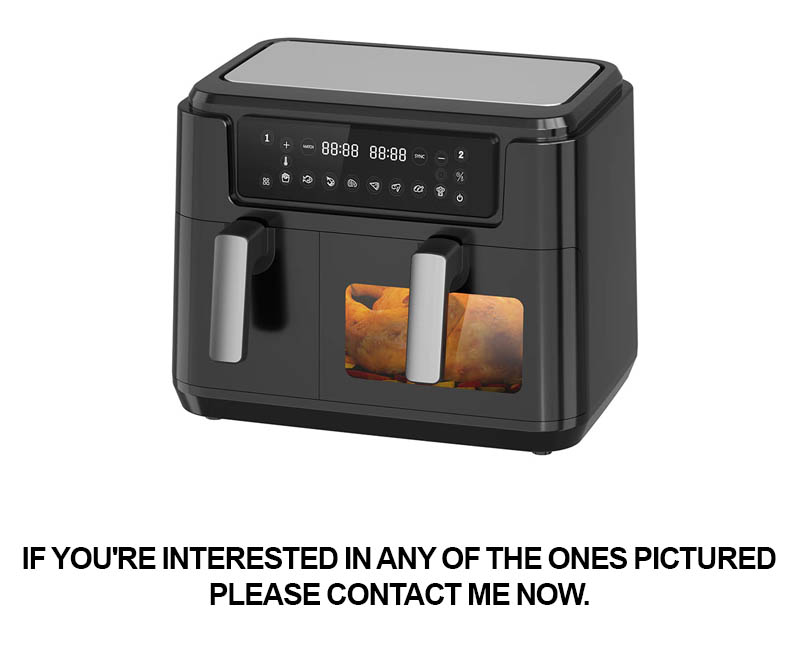
In the bustling landscape of commercial kitchen equipment, the role of a commercial toastie maker supplier is both crucial and multifaceted. These suppliers are the backbone of the industry, ensuring that cafes, bakeries, and restaurants have the tools they need to serve up those classic, golden-brown, and mouthwatering toasties. Let’s delve into the various aspects of this supplier’s role.
A commercial toastie maker supplier must understand the needs of their clients. This means catering to a range of businesses, from small coffee shops to large chains, each with their unique requirements. They must provide equipment that can handle high volumes if needed, while also ensuring that the units are user-friendly for staff who may not have extensive culinary training.
The selection process is a science in itself. Suppliers must be aware of the latest trends in the market and the specific preferences of their target audience. For instance, some customers might prioritize speed and efficiency, while others may seek toastie makers that offer a variety of browning options or unique features like adjustable heat settings. Suppliers must navigate this diverse terrain to offer the right products.
Quality is non-negotiable in the commercial kitchen environment. A toastie maker supplier must ensure that the equipment they provide is durable, reliable, and designed to withstand the rigors of a busy kitchen. This involves sourcing high-quality components and ensuring that the manufacturing process adheres to strict standards.
Service extends beyond the point of sale. A good supplier will offer comprehensive support, including installation, maintenance, and troubleshooting. This support is vital, as commercial toastie makers can encounter issues over time due to heavy use. The supplier’s ability to provide quick and efficient service can mean the difference between a satisfied customer and a dissatisfied one.
Innovation is a cornerstone of the commercial toastie maker supplier’s role. New technologies and design elements can enhance the efficiency, ease of use, and overall performance of the equipment. Suppliers must stay ahead of the curve, offering cutting-edge solutions that can streamline operations and improve the customer experience. For example, incorporating touchless operation or smart features can reduce the risk of cross-contamination and make the machine more hygienic.
Sustainability is also a growing concern. Suppliers are increasingly being asked to provide eco-friendly options. This could mean offering units that are energy-efficient or made from recycled materials. By addressing these concerns, suppliers can appeal to a broader customer base, including those who prioritize environmental responsibility.
Regulatory compliance is another critical aspect. Commercial toastie maker suppliers must ensure that their products meet all relevant health and safety standards. This includes certifications for electrical safety, food safety, and environmental compliance. By maintaining these standards, suppliers can protect their customers and themselves from legal repercussions.
Pricing is a delicate balance. Suppliers must find a sweet spot where the cost of the equipment is competitive, but also reflects the quality and reliability of the product. This requires a deep understanding of the market and the ability to adjust pricing strategies to remain competitive without compromising on quality.
Marketing and sales are essential functions for a commercial toastie maker supplier. They need to create awareness about their products and the benefits they offer. This involves attending trade shows, networking with potential clients, and utilizing digital marketing to reach a wider audience. Building a strong brand reputation is key to establishing long-term relationships with customers.
The global nature of the market means that suppliers often have to deal with international logistics and distribution. They must be adept at navigating shipping regulations, tariffs, and customs to ensure that their products reach customers efficiently and in perfect condition.
Lastly, the role of a commercial toastie maker supplier is to foster a sense of community within the industry. By hosting workshops, webinars, and sharing best practices, suppliers can help their customers to stay informed and up-to-date with the latest developments in toastie-making technology.
In conclusion, the role of a commercial toastie maker supplier is a multifaceted one, encompassing product knowledge, customer service, innovation, sustainability, regulatory compliance, and effective marketing. By excelling in these areas, suppliers can build a loyal customer base and contribute to the success of their clients’ businesses.

In the bustling world of commercial kitchen equipment, the commercial toastie maker has emerged as a staple for quick and convenient food service. When selecting a high-quality commercial toastie maker, there are several key features to consider that can make all the difference in efficiency, performance, and customer satisfaction.
The first feature to look for is the heating element’s efficiency. A top-tier toastie maker will boast a rapid heating system that can quickly reach the desired temperature, ensuring that your customers receive their toasted sandwiches promptly. The quality of the heating element can affect the evenness of the toast, so opting for a maker with a reliable and durable heating component is crucial.
Another vital aspect is the toastie maker’s size and capacity. Depending on the scale of your business, you might need a model that can handle a high volume of orders simultaneously. A larger, industrial-grade toastie maker can toast multiple sandwiches at once, reducing wait times and increasing throughput. However, the size should also be practical for your kitchen space, ensuring that it fits seamlessly into your layout without causing congestion.
The design of the toastie maker is equally important. A user-friendly interface with clear controls allows for easy operation, even for staff who may not be as familiar with kitchen equipment. Features like adjustable settings for browning levels, a visible indicator light, and a non-slip base can enhance usability and prevent accidents.
Durability is a non-negotiable in a commercial setting. A high-quality toastie maker should be constructed from robust materials that can withstand the rigors of a busy kitchen. Look for stainless steel construction, which is not only durable but also easy to clean and maintain. The presence of a heat-resistant handle and a sturdy build can mean the difference between a long-lasting appliance and one that requires frequent repairs or replacements.
The safety features of a commercial toastie maker cannot be overstated. A thermal cut-off switch is a must-have, as it automatically shuts off the machine if it overheats, preventing damage and reducing the risk of fire. Additionally, a lock-out feature that prevents accidental operation can be a lifesaver in a fast-paced kitchen environment.
The ease of cleaning is another crucial factor. A well-designed toastie maker will have removable parts that are dishwasher safe, making maintenance a breeze. This not only saves time but also ensures that your toastie maker stays in optimal condition for longer.
Customization options can be a game-changer for a commercial toastie maker. Some models offer adjustable settings for different types of bread, from thick slices to thin baguettes, allowing for a wider variety of toastie options. This versatility can cater to diverse customer preferences and keep your menu fresh and exciting.
Energy efficiency is a consideration that should not be overlooked. A commercial toastie maker that consumes less energy can help lower your utility bills over time. Look for appliances with energy-saving modes or those that are certified for energy efficiency.
Finally, consider the brand reputation and customer service when choosing a commercial toastie maker supplier. A reputable supplier will stand behind their products with a solid warranty and excellent customer support. This can be invaluable in the event of any issues or questions that arise during the appliance’s lifespan.
In summary, when selecting a high-quality commercial toastie maker, you should prioritize efficiency, capacity, design, durability, safety, ease of cleaning, customization, energy efficiency, and the supplier’s reputation. By focusing on these key features, you can ensure that your toastie maker will be a reliable and valuable asset to your commercial kitchen.
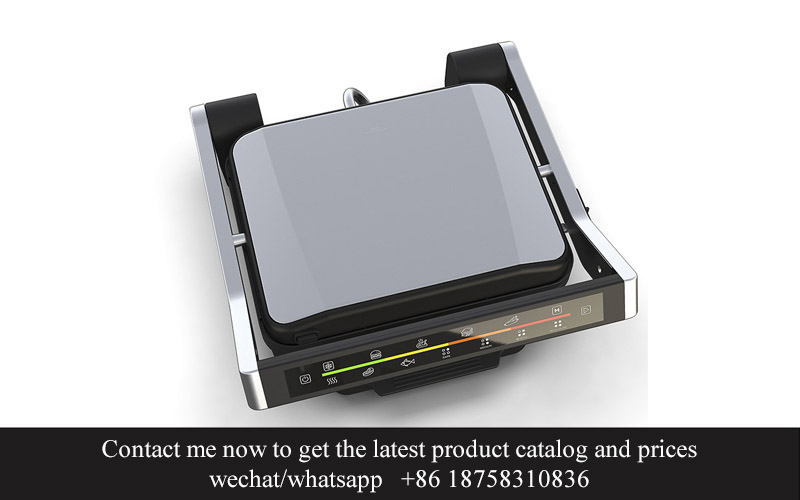
In the ever-evolving landscape of the commercial kitchen, understanding the latest industry trends and customer preferences is crucial for a toastie maker supplier. Here’s a glimpse into what’s shaping the market:
The demand for convenience and speed in foodservice continues to grow, and toastie makers are no exception. Consumers are looking for quick and easy ways to enjoy a warm, comforting snack or meal, and commercial toastie makers are stepping up to meet this need.
Customization is key. Today’s customers are not just looking for a simple toasted sandwich; they want variety. Toastie makers that offer adjustable settings for browning levels, different bread types, and even the ability to toast fillings separately are becoming increasingly popular.
Health and wellness are at the forefront of consumer choices. With a growing number of people opting for healthier eating habits, suppliers are focusing on models that can accommodate whole-grain breads, lean proteins, and fresh vegetables. The ability to toast with minimal oil or butter is a significant feature that appeals to health-conscious customers.
Technology integration is becoming more common in commercial appliances. Smart toastie makers that can be controlled remotely, offer programmable settings, or provide feedback on the toasting process are becoming more sought after. These features not only enhance the user experience but also streamline kitchen operations.
Sustainability is a major consideration for both businesses and consumers. Eco-friendly materials, energy-efficient designs, and appliances that are easy to clean and maintain are gaining traction. Suppliers that can offer a greener alternative without compromising on performance are likely to capture a larger market share.
The rise of niche markets has expanded the horizons for toastie makers. For example, there’s a growing interest in gourmet and specialty toasties, which may require specific features like adjustable heat settings or the ability to toast multiple slices at once. Suppliers are responding by creating specialized machines that cater to these unique needs.
Ease of use and maintenance are critical factors in the success of a commercial toastie maker. Operators are looking for machines that are intuitive to operate, with clear displays and easy-to-access controls. Additionally, the ability to quickly and efficiently clean the machine after use is a significant advantage.
Safety features are also a top priority. Toastie makers with automatic shut-offs, non-slip bases, and cool-to-the-touch exteriors are becoming standard. These features not only protect the operator but also ensure that the machine is safe for customers to use.
The trend towards healthier, more diverse food options has led to a demand for toastie makers that can handle a variety of ingredients. From vegan and gluten-free options to those that can toast a variety of breads and pastries, suppliers are focusing on versatility.
Innovation in design is also playing a role in the market dynamics. Toastie makers that offer a sleek, modern look are appealing to businesses looking to create a contemporary dining experience. The aesthetics of the appliance can influence the perception of the food it produces.
Lastly, the rise of mobile and pop-up restaurants has created a need for portable and compact toastie makers. These portable models are designed to be easily transported and set up, making them ideal for temporary locations or events.
Understanding these trends and preferences is essential for a commercial toastie maker supplier to stay competitive and meet the demands of the market. By focusing on these key areas, suppliers can ensure they are offering products that not only meet but exceed customer expectations.
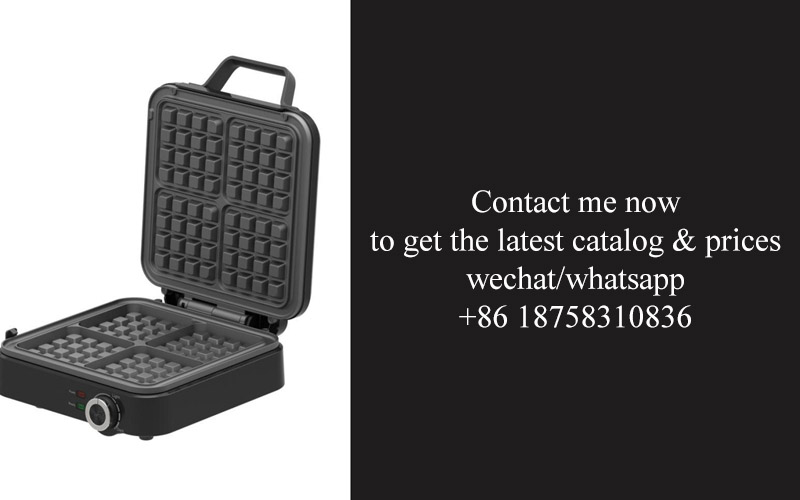
In today’s data-driven world, the numbers speak volumes about the commercial toastie maker market. Let’s delve into the insights that these figures reveal.
Consumer Demand AnalysisThe data indicates a significant increase in the demand for commercial toastie makers over the past few years. With a growing preference for grab-and-go snacks, the popularity of toasties has surged, reflecting a shift towards convenience and quick service.
Market SegmentationInsightful data segmentation highlights that the commercial toastie maker market is not homogeneous. Different segments, such as cafes, delis, and hotels, have varying needs and preferences. For instance, cafes may prioritize compactness and speed, while hotels might look for versatility and durability.
Product Features that Stand OutNumbers show that certain features are more sought after than others. Toastie makers with adjustable heat settings, programmable timers, and non-stick surfaces are consistently popular. These features not only enhance the quality of the product but also contribute to a more efficient operation.
Sales PerformanceAnalyzing sales data reveals trends in purchasing patterns. High-end models with advanced functionalities tend to have a slower sales growth compared to more affordable, yet reliable, models. This suggests that cost-effectiveness is a crucial factor for many consumers in the commercial sector.
Customer Satisfaction ScoresCustomer feedback and satisfaction scores provide valuable insights into the performance of various toastie makers. High ratings often correlate with consistent toasting quality, ease of use, and durability. These metrics help suppliers understand what their customers truly value.
Market Saturation and CompetitionData on market saturation and competition is crucial for suppliers. Areas with a high concentration of cafes and delis often have more competition, leading to a need for unique selling propositions (USPs) that differentiate one supplier’s product from another.
Global Market TrendsInternational data indicates that the demand for commercial toastie makers is not limited to one region. Global trends show an upward trajectory in countries with a strong coffee culture and a growing interest in quick-service snacks. This suggests that suppliers should consider expanding their reach into new markets.
Economic FactorsEconomic indicators, such as inflation rates and consumer spending power, play a role in shaping the market for commercial toastie makers. In times of economic downturn, there might be a shift towards more budget-friendly options, while during economic upswings, higher-end products may see increased interest.
Regulatory ComplianceNumbers also reflect the importance of regulatory compliance in the market. Suppliers must ensure that their products meet safety standards and certifications, which can impact sales positively in certain regions.
Technological AdvancementsData on technological advancements within the toastie maker industry shows a steady increase in innovations. Smart features, such as Bluetooth connectivity and mobile app control, are becoming more common, indicating a shift towards technology integration.
Consumer Behavior ShiftsConsumer behavior shifts, such as an increased interest in healthier eating options, are influencing the market. Suppliers that adapt to these changes by offering healthier toastie options or customizable settings to control fat and calorie content may find a competitive edge.
Sales ChannelsSales channel data reveals where and how customers are purchasing commercial toastie makers. Online sales have seen a surge, with more businesses opting for direct-to-consumer purchases. This trend underscores the importance of a strong online presence for suppliers.
Competitor AnalysisFinally, data-driven competitor analysis helps suppliers understand the market landscape. By examining what competitors are offering and how they position their products, suppliers can identify gaps in the market and opportunities for innovation.
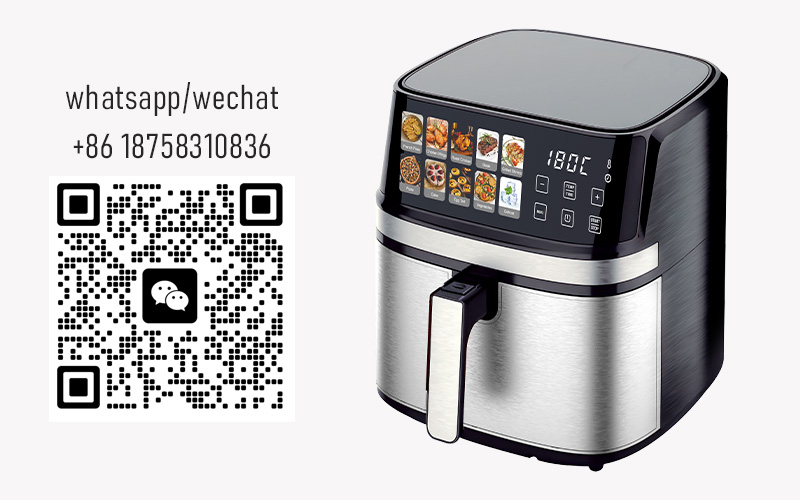
In the ever-evolving landscape of kitchen appliances, the role of technology in toastie makers cannot be overstated. From the humble beginnings of the simple toaster to the sophisticated commercial models now available, technology has significantly shaped the industry. Here’s a glimpse into how tech has transformed the toastie maker scene.
The evolution of heating elements has been a cornerstone of technological advancement in toastie makers. Early models relied on resistive heating elements that were less efficient and could be prone to overheating. Today, advancements like ceramic heating elements offer faster toasting times and more even heat distribution, ensuring that every slice of bread achieves that perfect golden-brown crispness.
Smart sensors and digital controls have revolutionized the user experience. Modern commercial toastie makers often come equipped with features like adjustable browning levels, pre-programmed settings for different bread types, and even timers. These innovations allow operators to cater to a wide range of preferences with ease, from the delicate crumb of a bagel to the hearty crunch of a thick artisanal loaf.
One of the most significant impacts of technology has been the integration of safety features. Modern toastie makers are designed with multiple safety mechanisms to prevent accidents. Auto shut-off functions, non-slip bases, and cool-to-the-touch exteriors are just a few examples of how technology has made these appliances safer for both consumers and commercial kitchens.
Energy efficiency has also been a major focus. As environmental concerns grow, manufacturers have been striving to create appliances that consume less power without compromising performance. This has led to the development of energy-saving modes and eco-friendly materials that reduce the carbon footprint of commercial operations.
The rise of connectivity has brought about a new wave of innovation. Toastie makers are now being integrated with smart kitchen systems, allowing for remote monitoring and control. This means that operators can manage their appliances from anywhere, adjusting settings and even receiving maintenance alerts via their smartphones or tablets.
Customization is another area where technology has made its mark. Modern toastie makers can be designed to accommodate various types of bread and toasting preferences, from gluten-free to vegan options. The ability to adjust the width of the slots to fit different bread sizes is a testament to the flexibility and adaptability of technology in this field.
In terms of design, technology has allowed for sleeker, more modern aesthetics. Toastie makers that once took up a lot of counter space have been slimmed down, with compact designs that are both functional and visually appealing. This has made them a staple in trendy cafes and upscale eateries.
Maintenance has also been streamlined with the help of technology. Modern appliances often come with digital displays that provide detailed information about usage and maintenance schedules. This not only prolongs the life of the appliance but also reduces downtime and repair costs.
Lastly, the integration of marketing and promotional technology has changed how toastie makers are sold and perceived. With digital marketing campaigns and interactive product demonstrations, suppliers can showcase the features and benefits of their products more effectively than ever before.
In conclusion, the impact of technology on toastie makers is profound. It has not only improved the functionality and safety of these appliances but has also enhanced their aesthetic appeal and efficiency. As technology continues to advance, we can expect even more innovative features that will further shape the future of the commercial toastie maker market.
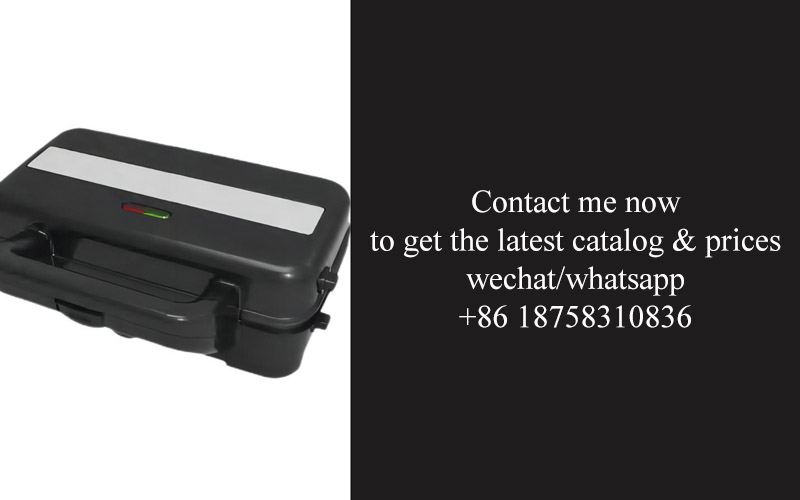
In the world of commercial toastie makers, several case studies have emerged that showcase successful implementations across various industries. These examples highlight how these machines have become integral to businesses looking to enhance their offerings and customer satisfaction. Let’s delve into some of these case studies.
A bustling café in the heart of a busy city decided to invest in a commercial toastie maker to diversify its menu. The café’s owner, recognizing the popularity of toasted sandwiches among customers, chose a model that offered customizable settings for different types of bread and fillings. The result was a hit, with customers raving about the freshly toasted, crispy sandwiches that were ready in minutes. The café’s revenue from toasties alone increased by 30%, and the machine quickly paid for itself.
A local bakery, known for its freshly baked goods, sought to expand its offerings by incorporating a commercial toastie maker. The bakery owner, wanting to maintain the quality of their bread, selected a model that allowed for precise temperature control. This attention to detail was crucial, as the bakery wanted to ensure that their toasties were as delicious as their bread. The introduction of toasties to the bakery’s menu not only attracted new customers but also brought back loyal ones who appreciated the unique combination of fresh bread and toasted sandwiches.
A high-end hotel restaurant faced a challenge when it came to offering quick yet satisfying meals to its guests. The solution was a commercial toastie maker that could produce a variety of toasted sandwiches and wraps in a short amount of time. The hotel’s executive chef was particularly impressed with the machine’s ability to maintain consistent quality across different batches. The hotel’s guests responded positively, with many requesting toasties for their room service, leading to an increase in room service revenue.
A food truck operator was looking for a portable solution to add to their mobile kitchen. They found a compact commercial toastie maker that could be easily transported and set up. The machine’s ease of use and quick heating capabilities allowed the food truck to offer a unique twist on traditional sandwiches. The food truck’s customers were intrigued by the toasted sandwiches, and the operator noticed a surge in sales, especially during lunchtime when the demand for quick meals was highest.
A sports stadium, always looking to improve the fan experience, installed commercial toastie makers in its food courts. The machines were designed to handle high volumes of orders during peak times, such as games and events. The stadium’s management was pleased with the consistency and speed of the toasties, which helped to reduce wait times and improve customer satisfaction. The popularity of the toasties also led to an increase in overall food court sales.
A college campus dining hall introduced a commercial toastie maker to cater to the diverse tastes of its students. The machine’s ability to toast a variety of breads and accommodate different toppings made it a hit among students who sought a quick and satisfying meal. The dining hall staff appreciated the ease of use and the ability to quickly restock the machine with popular fillings. The toastie station became a popular spot for students to grab a quick bite between classes.
These case studies demonstrate the versatility and impact of commercial toastie makers in various settings. From cafes to hotels, food trucks to stadiums, and even college campuses, these machines have proven to be a valuable addition to any establishment looking to offer a quick, delicious, and customizable snack option.
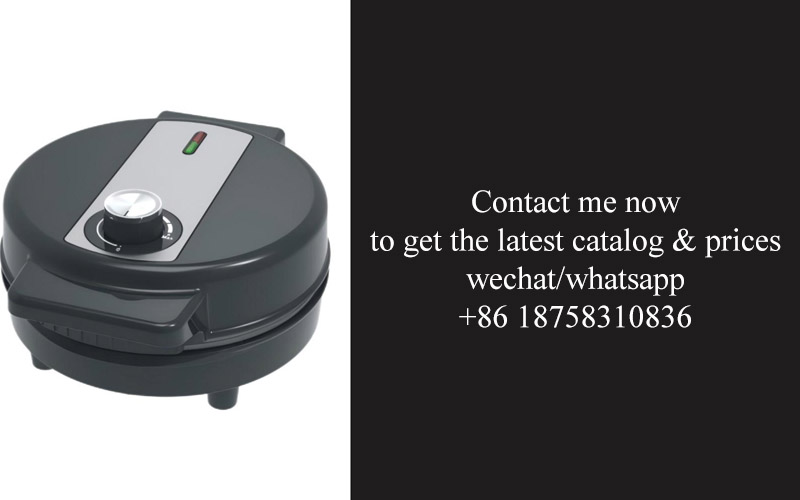
The commercial toastie maker market has been witnessing a surge in demand, driven by changing consumer preferences and the rise of convenience-oriented dining. From trendy cafes to busy office canteens, these compact appliances have become a staple. Let’s delve into the factors that have shaped this market and the predictions for its future trajectory.
The Shift Towards ConvenienceThe pace of modern life has accelerated, and convenience has become a top priority for consumers. Toastie makers offer a quick, easy, and delicious solution to a breakfast or snack on the go. The ability to create a warm, toasty sandwich in minutes has made them a hit in both commercial and domestic settings.
Versatility in OfferingsAs the market has grown, so has the variety of toastie makers available. From simple two-slice models to six-slice commercial units, suppliers have catered to a wide range of needs. This versatility has allowed for the appliance to be integrated into various commercial settings, from small cafes to large food service operations.
Health and Wellness FocusConsumers are increasingly interested in health and wellness, and toastie makers have adapted to this trend. Many models now offer adjustable browning settings, allowing for control over the amount of fat and calories in each sandwich. This has made toastie makers not just a convenience, but also a healthier option.
Customization and PersonalizationToday’s customers seek unique experiences, and toastie makers have stepped up to the plate. Suppliers are now offering a range of features that allow for customization, such as adjustable sandwiches, different bread types, and even the option to add cheese or spreads. This personalization has added a new layer of appeal to the commercial toastie market.
Smart Technology IntegrationThe integration of smart technology into toastie makers has been a game-changer. From programmable timers to digital controls, these appliances are becoming more user-friendly and efficient. Smart features not only enhance the user experience but also improve energy efficiency and reduce waste.
Case Study: Urban Café SuccessConsider an urban café that invested in a high-end commercial toastie maker with smart capabilities. The café’s patrons appreciated the quick service and the variety of toastie options. The café reported a boost in sales and customer satisfaction, proving that a quality toastie maker can be a valuable asset in a bustling urban environment.
Case Study: Office Canteen EfficiencyA large office complex installed a high-capacity toastie maker in their canteen. The appliance was designed to handle high volumes, ensuring that employees could enjoy a freshly toasted sandwich during their breaks. The result was a more efficient canteen operation and happier, satisfied workers.
Market Growth PredictionsAnalysts predict that the commercial toastie maker market will continue to grow, with a particular focus on smart and health-conscious models. As the demand for convenience and health awareness increases, toastie makers with advanced features and customization options are likely to dominate.
Sustainability and Eco-Friendly DesignsThe emphasis on sustainability is also shaping the commercial toastie maker market. Suppliers are now offering appliances with eco-friendly materials and energy-saving technologies. As consumers become more environmentally conscious, these sustainable features are expected to become a key selling point.
The Role of Social Media and Digital MarketingSocial media has played a significant role in the success of the commercial toastie maker market. By showcasing the versatility and appeal of these appliances, suppliers have been able to reach a wider audience. Digital marketing strategies are expected to become even more crucial in the future, as they help in creating brand awareness and driving sales.
ConclusionThe commercial toastie maker market has evolved significantly, with a focus on convenience, health, and innovation. As technology continues to advance and consumer preferences shift, the future looks promising for this segment. Suppliers who can adapt to these changes and offer high-quality, customizable, and sustainable products will be well-positioned to capitalize on the ongoing growth.